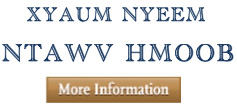History in Vietnam
IN THIS SECTION
Hmong in Vietnam
Ethnicity
The Hmong, also known as the Miao, originated from southern China and started to settle in Vietnam during the 19th century when they built hamlets in the highland regions of Ha Giang and Lao Cai provinces. The history of this emigration is closely linked to that of the Hmong struggle against the Chinese feudal authorities. The Hmong in Vietnam consist of three main dialects: Blue, White and Black.
Language
The Hmong belong to the Hmong-Mien group of the Austro-Thai language family. Because of their dispersion and geographical isolation, the various groups are separated from each by language, dress and customs, which may vary greatly from region to region and even from village to village. Their language has been divided into four main groups, consisting of over 80 sub-dialects. OMF works with the Far-Western Hmong group made up of 35 dialects.
Population
There are about 750,000 Hmong in Vietnam (over 1% of Vietnam’s population).
Location
The Hmong are widely spread across the highland areas of Vietnam, but particularly near the Chinese border down to the 18th parallel.
Culture
The Hmong house is often rudimentary in architecture and comprises three bays and two lean-tos. The altar to the ancestors is located in the central bay. The lateral bays serve as kitchen and bedrooms. The Hmong particularly value silver jewelry as this signifies wealth and a good life. Men, women and children wear silver necklaces and bracelets. Hmong society is characterized by great solidarity among members of the same family and among villagers. The village, called agiao, is the smallest administrative unit comprising from just a few households up to hundreds, the population density depending on the agricultural situation in the region.
Livelihood
Hmong value their independence and tend to live at high altitudes, away from other tribes. The principal food plant grown is corn, with rice taking second place. Besides irrigated rice fields, they also cultivate rice on terraces. In the corn fields, they alternately plant various leguminous plants such as green beans and peas. The principal fiber plant is the hemp. Cotton is also grown and the Hmong are known to be good weavers. The poppy was an important plant in the past.
Poultry and cattle rearing are relatively well developed. The utilisation of forest constitutes an important additional source of income for the family economy. Handicrafts such as cloth dyeing with indigo, silver jewellery, leather tanning, carpentry and basketry are quite developed, although only pursued at certain periods during idle times of the agricultural cycle.
In the past the Hmong lived in considerable poverty, practising shifting cultivation on the slopes of rocky mountains. They have now changed to a sedentary lifestyle, establishing hydraulic systems to develop irrigated terraced fields and growing crops on plots of land surrounded by stone borders.
Religion
The Hmong are spirit worshippers. They believe in household spirits and those of the door and cattle. Every house has an altar, where protection for the household is sought. Buddhism, Confucianism and Taoism have left their mark on a number of concepts and social institutions.
Openness to Christianity
At the beginning of the 20th century, Catholic missionaries attempted to convert the Hmong. Churches were built in Sa Pa (Lao Cai) and Nghai Lo.
There are currently church-planting movements among the White and Blue Hmong with Christians numbering up to 400,000. An infant movement is just beginning among the Black Hmong. Hundreds of leaders are being trained informally through radio and house churches. The church is suffering much persecution and is under constant pressure from the authorities.
Source: WWW.OMF.ORG







